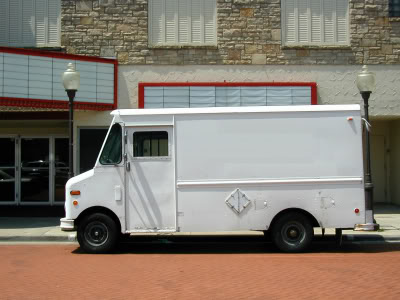Revised Rule on Fugitive Emissions for NSR Permitting
U.S. EPA has revised its long-standing policy regarding which existing major stationary sources are required to include fugitive emissions when determining whether emission increases from physical or operational changes result in a major modification under New Source Review (NSR). U.S. EPA currently requires all source categories to consider fugitive emissions when determining whether an emission increase from a source modification triggers major NSR permitting requirements. U.S. EPA will now require only those 26 “listed” 100-ton source categories designated through rulemaking pursuant to Section 302(j) of the Clean Air Act (CAA) (i.e., Section 302(j) sources) to consider fugitive emissions when making applicability determinations under NSR. However, U.S. EPA intends to preserve its existing treatment of fugitive emissions for Plantwide Applicability Limit (PAL) permits.
To implement its new approach to fugitive emissions, U.S. EPA revised four (4) main portions of the major NSR program regulations: 40 CFR §§51.165, 51.166, 52.21, and Appendix S to Part 51. The revisions are nearly identical for the existing regulations because they contain nearly identical provisions related to major modifications. In addition, U.S. EPA is also finalizing the following:
- A minor change in the provisions for PALs to preserve their existing treatment of fugitive emissions.
- A modification to the paragraph in each section that explains how to calculate whether a significant emissions increase will occur as the result of a physical or operational change.
- A minor revision in the provisions on monitoring and reporting for physical and operational changes that are found not to be major modifications.
- A revision to the definitions of ”baseline actual emissions” and ”projected actual emissions” for NSR permitting.
A number of states will continue to include fugitive emissions in their applicability 
Climate Change News and Notes
The Western Climate Initiative (WCI) released a report that contains the proposed approach for addressing the calculation and reporting of greenhouse gas (GHG) emissions as part of the WCI Regional Cap and Trade Program. The tracking of GHG emissions will begin in 2010 and reporting will begin in 2011. Combustion and non-combustion emissions from electrical generation, large industrial facilities, and gas and oil production will be part of the program. Participation in the allowance portion of the WCI Regional Cap and Trade Program will be phased in by having larger GHG sources begin to participate in January 2012 and smaller GHG sources participating at a later date. If a facility emits more than 25,000 metric tons of carbon dioxide equivalent (CO2e), it will be included in 
UPDATE: The Resurrection of CAIR
On December 23, 2008, the U.S. Court of Appeals for the District of Columbia Circuit (Court) reversed its earlier (July 11, 2008) decision to vacate the Federal Clean Air Interstate Rule (CAIR). The Federal court decided, after considering comments from the appellants to the rule, to allow CAIR to remain in effect while U.S. EPA “fixes” the rule. In the July 11, 2008 decision, the Court had identified where the rule was not consistent with the Clean Air Act (CAA). In its order for a rehearing the Court stated: “Here, we are convinced that, notwithstanding the relative flaws of CAIR, allowing CAIR to remain in effect until it is replaced by a rule consistent with our opinion would at least temporarily preserve the environmental values covered by CAIR.”
On July 11, 2008, the Court had decided to vacate CAIR in its entirety and remand it to U.S. EPA declaring that the 2005 rule “had more than several fatal flaws.” In September 2008, U.S. EPA petitioned the Court for a rehearing or as an alternative, a remand of CAIR without the Court’s order vacating the rule. The Court, in its December order, stated that it had considered the appellant parties’ positions in making its determination to remand CAIR to U.S. EPA without vacating it. The Court did not give U.S. EPA a specific deadline for revising CAIR as some petitioners had requested, but the court warned the Federal agency that it did “not intend to grant an indefinite stay of the effectiveness of this court’s decision.”
Most CAIR-affected sources and state air quality regulatory agencies believe that the recent Court decision is a good move that will benefit the environment and is in the best interest of industry. However, this action may have caught both regulators and CAIR-affected sources off guard because of the January 1, 2009 effective date of CAIR. U.S. EPA has indicated that it will issue guidance to address problems that may result 
The immediate future of CAIR has regained certainty, but now the owners and operators of CAIR-affected sources are left with making long-term decisions about the use of their allowances and construction of additional CAIR controls without the benefit of knowing what the revised final CAIR rule will ultimately look like. We suggest that CAIR-affected sources track the development of the Court-mandated CAIR revisions very closely. Considering its past history and the fact that we will now have a new U.S. EPA Administrator, the surprises may not be over.
U.S. EPA Issues Final Flexible Permit Rule
On January 13, 2009, U.S. EPA finalized a flexible permitting rule that was initially proposed on September 12, 2007 (see our February 2008 4 The Record article for an analysis of the proposed rule). The rule revises the Title V regulations to allow for the development of flexible air permits (FAPs). In U.S. EPA’s own words, a FAP is a Title V permit that facilitates flexible, market-responsive operations at a source through the use of one (1) or more permitting approaches, while ensuring equal or greater environmental protection as achieved by conventional permits. The flexibility provisions provided in the rule and described in the preamble have been tested and evaluated over a decade through a pilot flexible air permitting program and have been previously described in U.S. EPA White Paper No. 3.
The final flexible permit rule retains the alternative 
Click here to read the final rule. A more complete analysis of the final flexible permitting rule will be available in ALL4’s February 2009 issue of 4 The Record.
Pennsylvania Adopts Diesel Anti-Idling Rules
On October 9, 2008, Pennsylvania Governor Ed Rendell signed the Diesel-Powered Motor Vehicle Idling Act No. 124 which provides for idling restrictions on diesel-powered vehicles within the State. The provisions of the law will become effective on February 6, 2009. At about the same time that the Governor signed Act No. 124, the Pennsylvania Department of Environmental Protection (PADEP) was finalizing a separate anti-idling regulation which would have implemented similar requirements to those specified in Act No. 124. PADEP withdrew its idling restriction regulations through notice in the Pennsylvania Bulletin on November 15, 2008. PADEP has no intention of developing new regulations, but intends to enforce Act No. 124. Under Act No. 124, the owner or operator of the diesel-powered vehicle and the owner or operator of the location where the vehicle is loaded, unloaded, or parked are responsible for compliance with the requirements.
With the implementation of the restriction literally 

